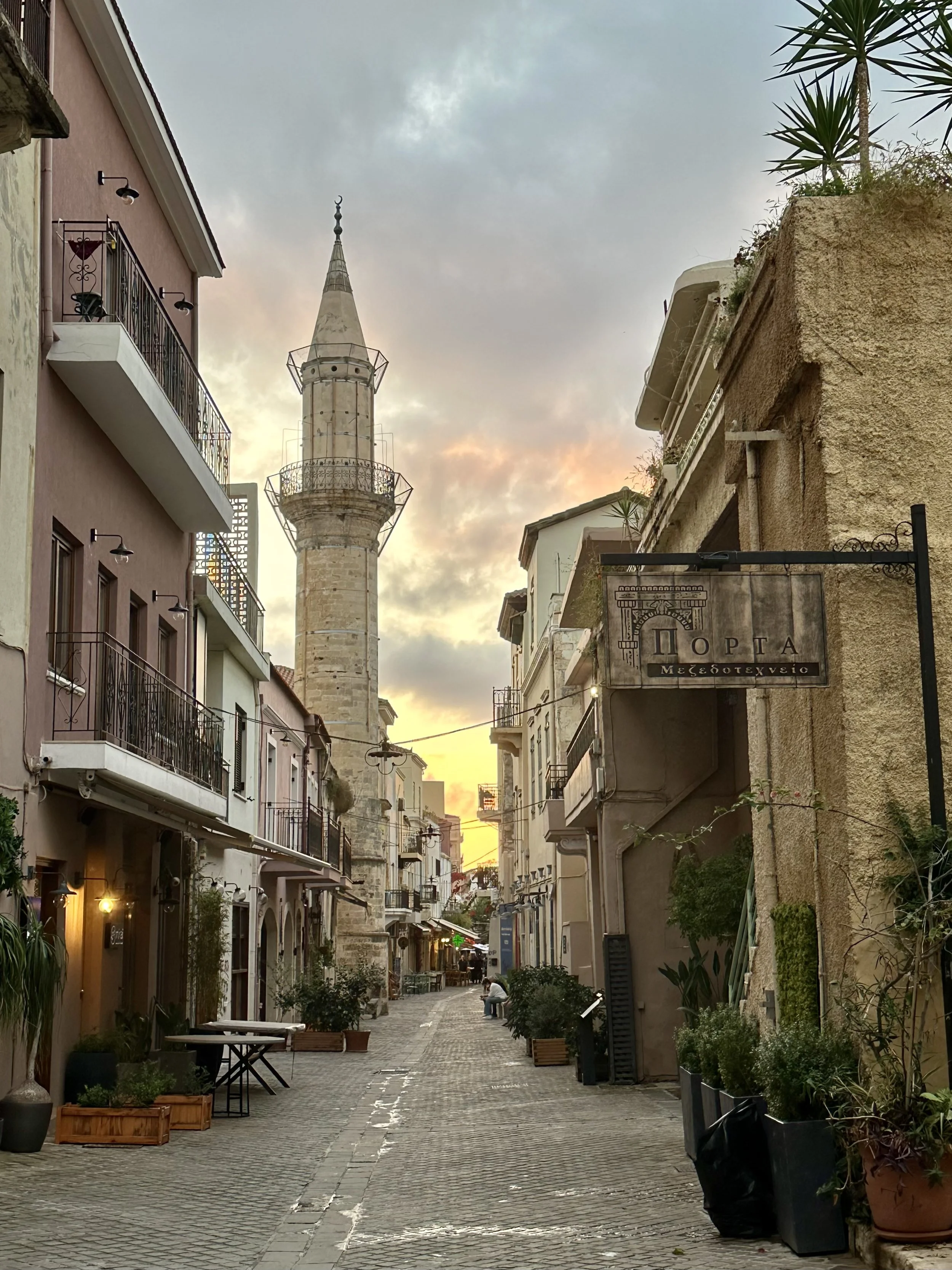Archaeological Museum of Chania
The Archaeological Museum of Chania is in Halepa, a suburb of Chania just east of Koum Kapí. So we returned to the seaside promenade that we’d visited on our walking tour, and then just kept walking. There were some mysterious stone ruins in the water (they looked old, but not ancient) and nice views of Old Town Chania. There was an interesting bronze statue labeled “Aviation Monument” (thank you, Google translate). I correctly guessed that it was depicting the Fall of Icarus. The monument was dedicated to the Greek aviators who fought in the Battle of Crete during World War II.
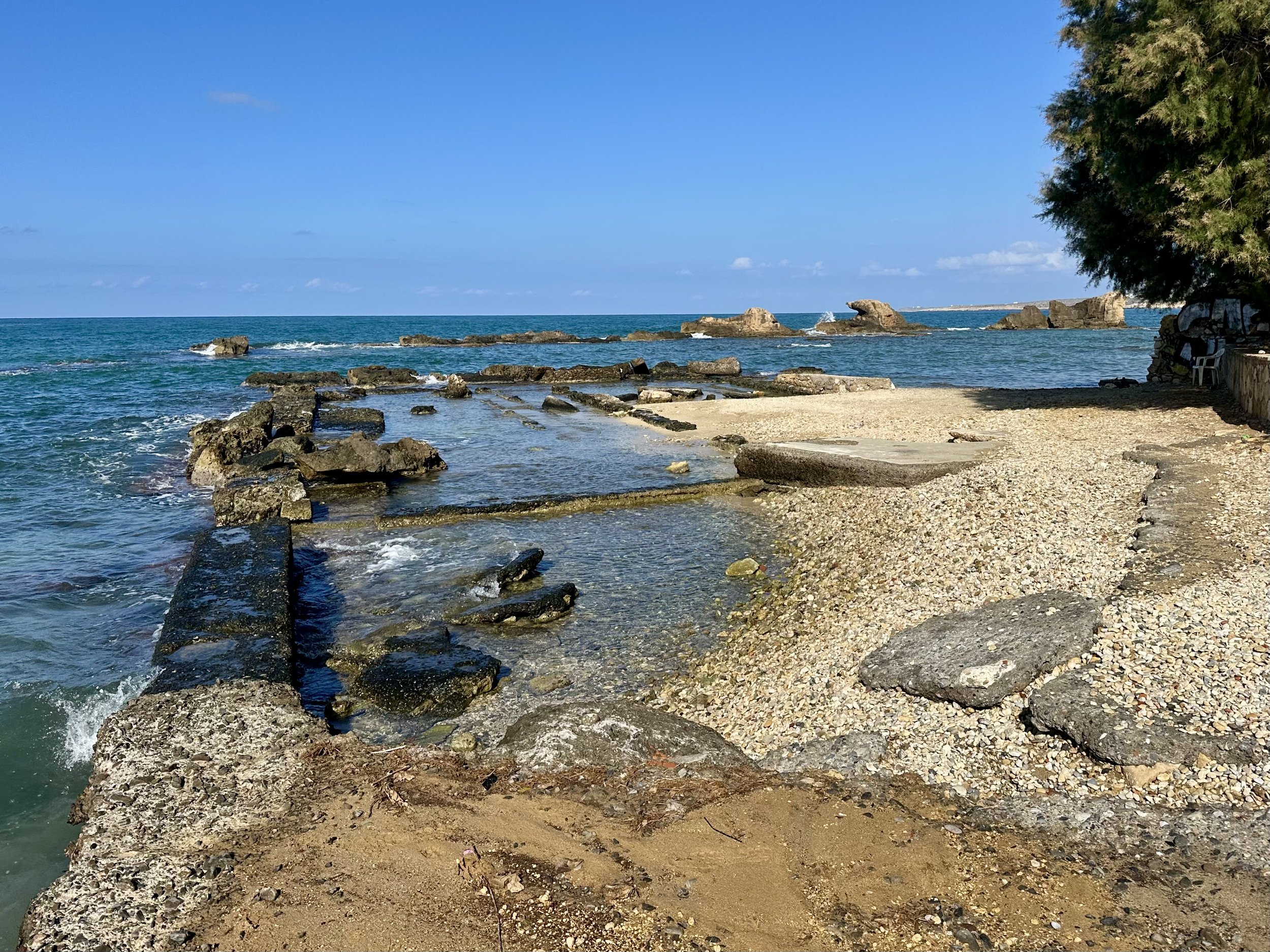
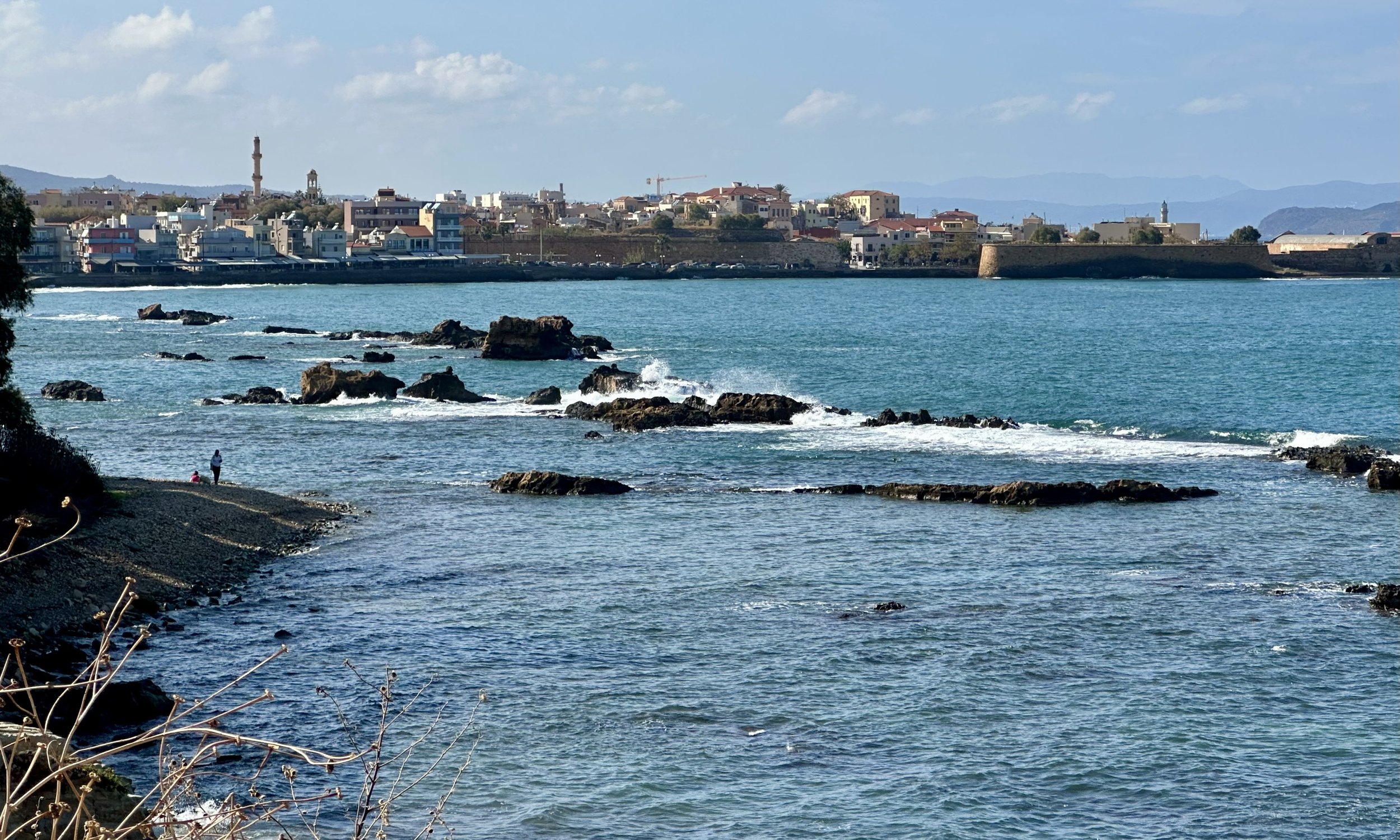

The museum was a surprisingly large and modern building up on a hillside. I was thirsty after our walk, so we went upstairs to the cafe, which had sweeping views. Here we could clearly see the Venetian wall surrounding Old Town Chania. Beyond Chania was the rocky uninhabited island Agios Theodoros, and beyond that were the mountains of western Crete.
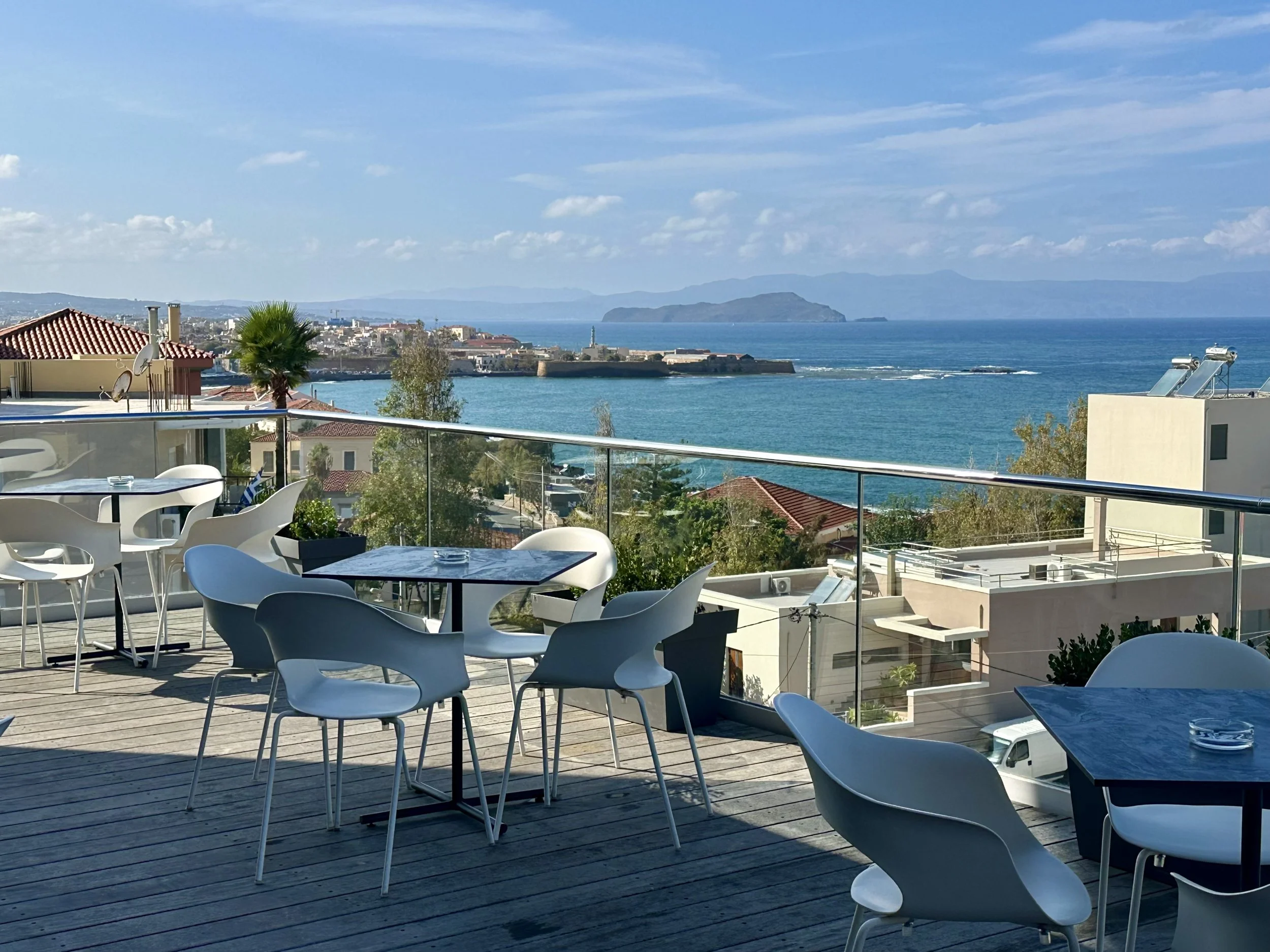
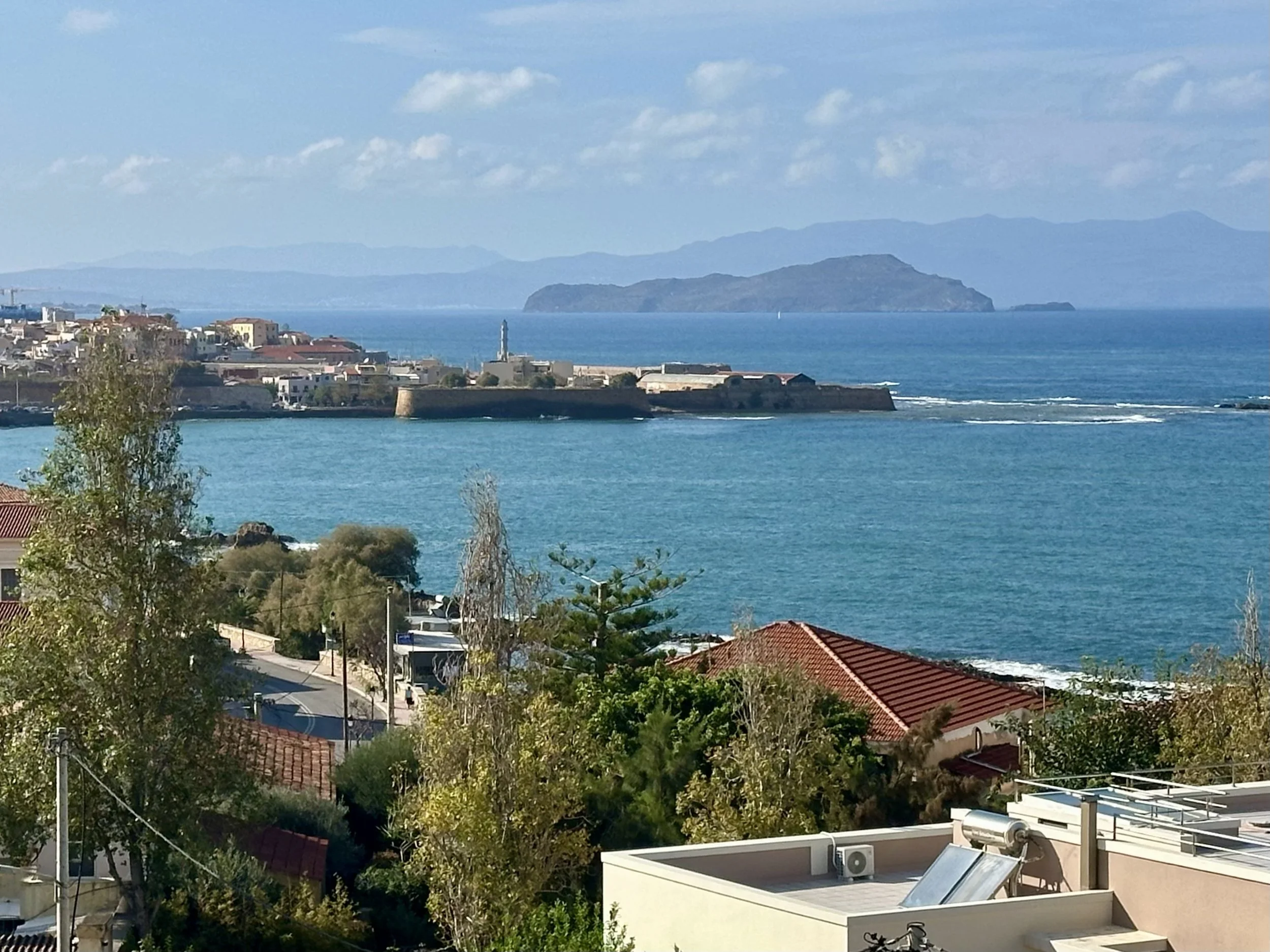
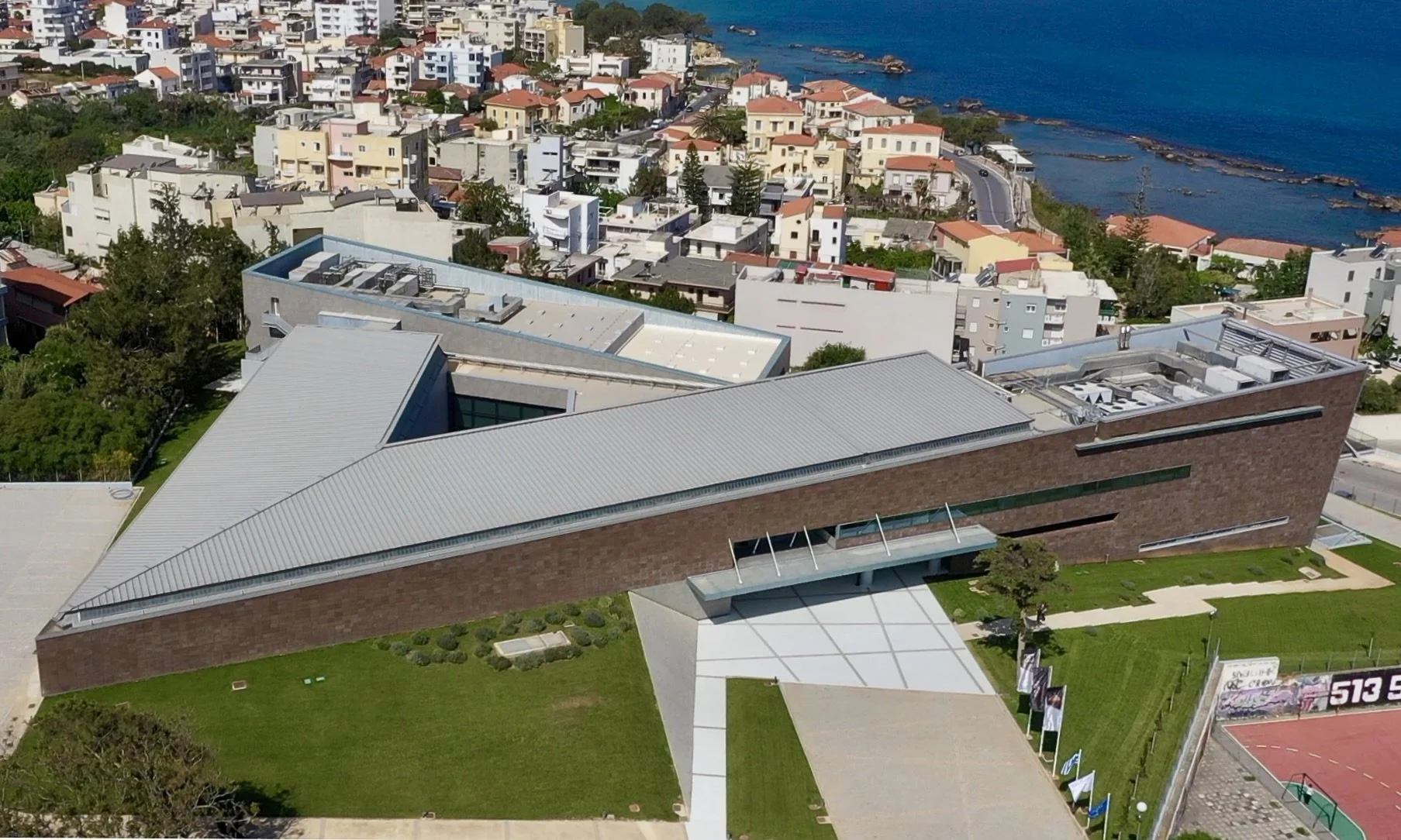
The museum was impressive! The artifacts were nicely curated and well-lit, with non-glare glass. The wall texts were engaging and drew us smoothly through the time line. Full-scale reconstructions of the excavation sites provided context. It was my favorite of the many archaeological museums we’ve seen in Greece.
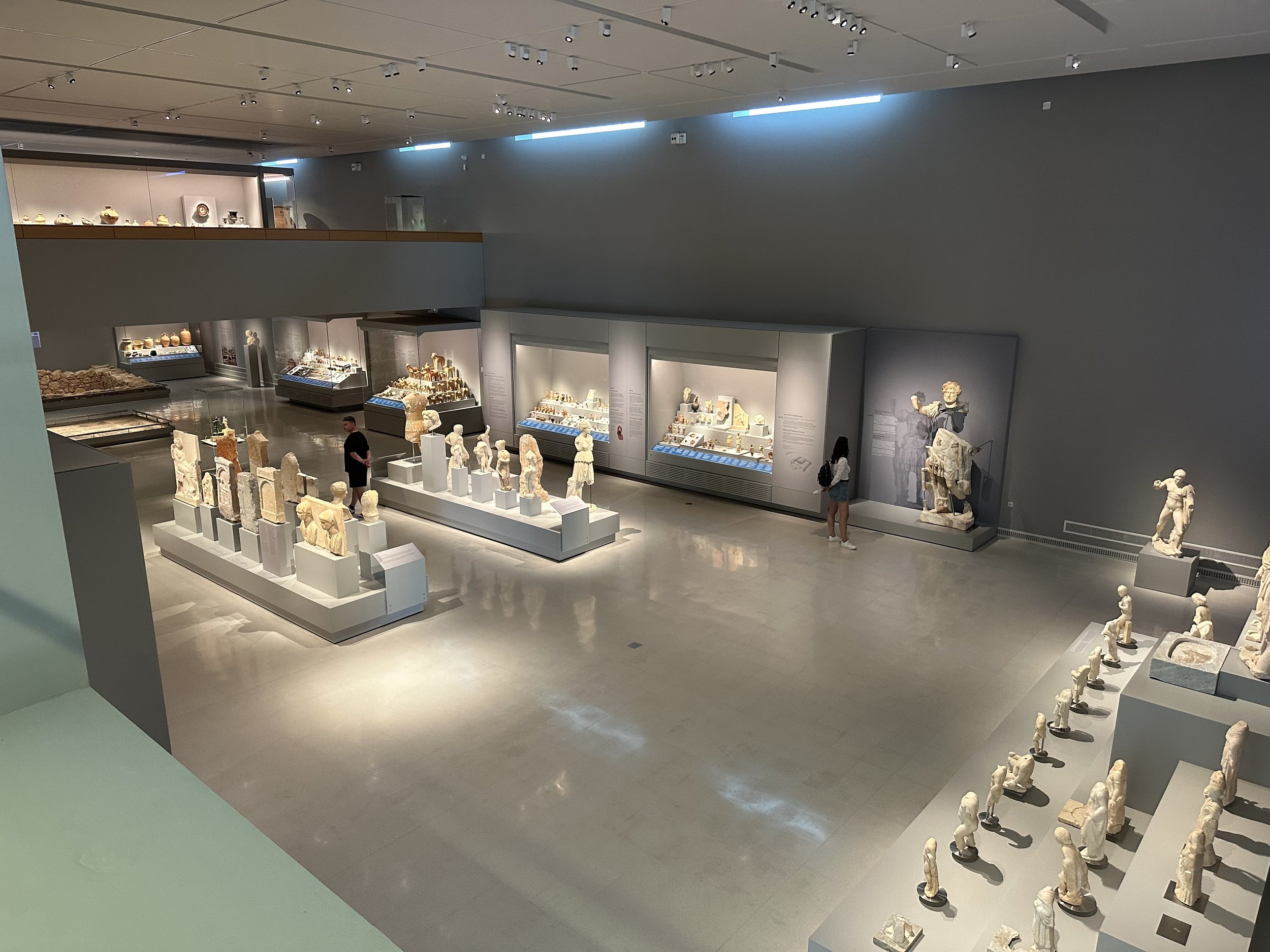
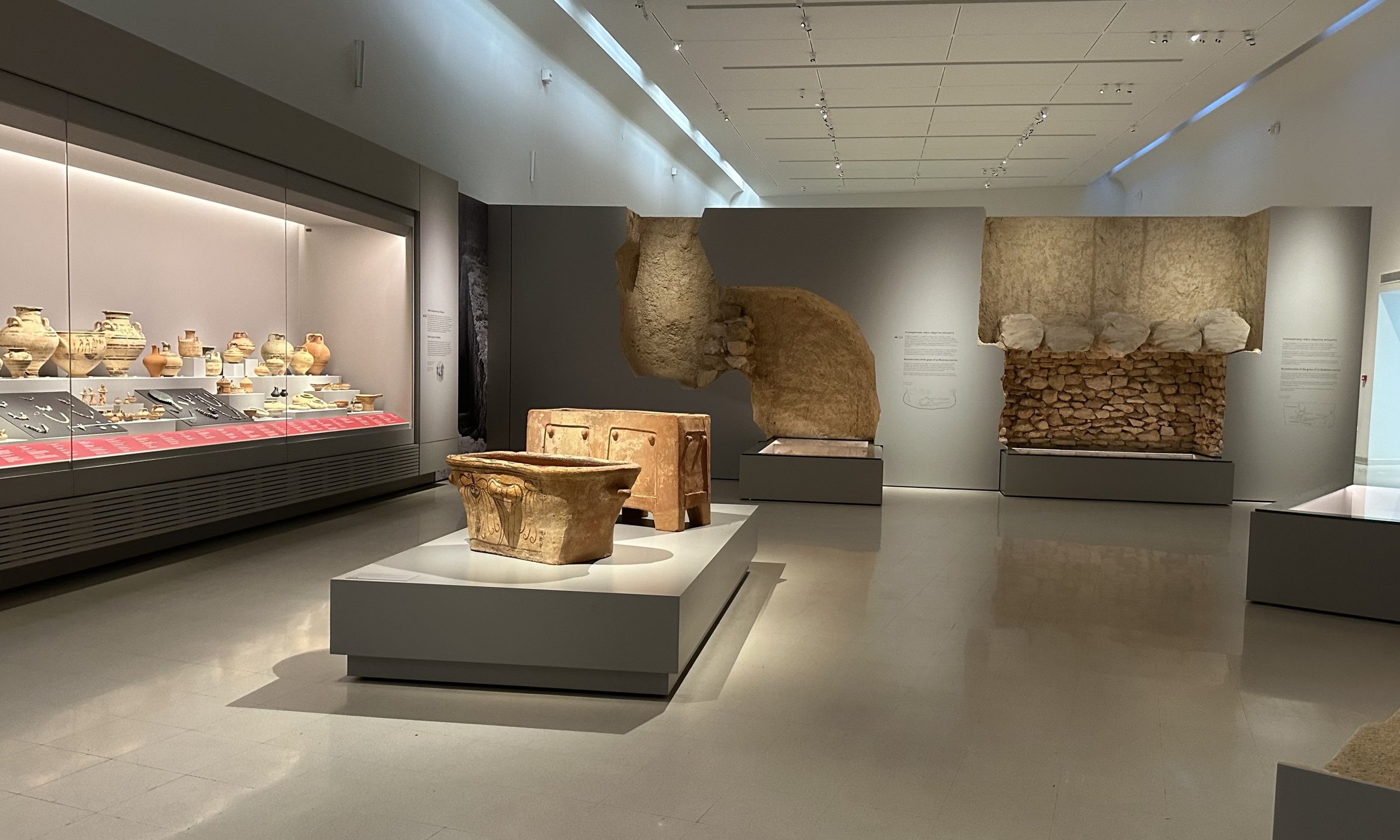

Many of the artifacts had come from the Minoan city of Kydonia, whose ruins are directly under Chania, such as those we had seen next to the Byzantine wall. There were dozens of vessels produced by the same Kydonian pottery workshop, made with the same white clay and reddish-orange paint. There were double-vases used for rituals, and decorated stirrup jars that had contained olive oil perfumed with herbs and flowers. Fragments of clay tablets had the Linear A script, a Minoan writing system used from 1800 to 1450 BCE. Linear A has never been deciphered, but it evolved into Linear B, which was an early form of the Greek language used by the people of Mycenae.

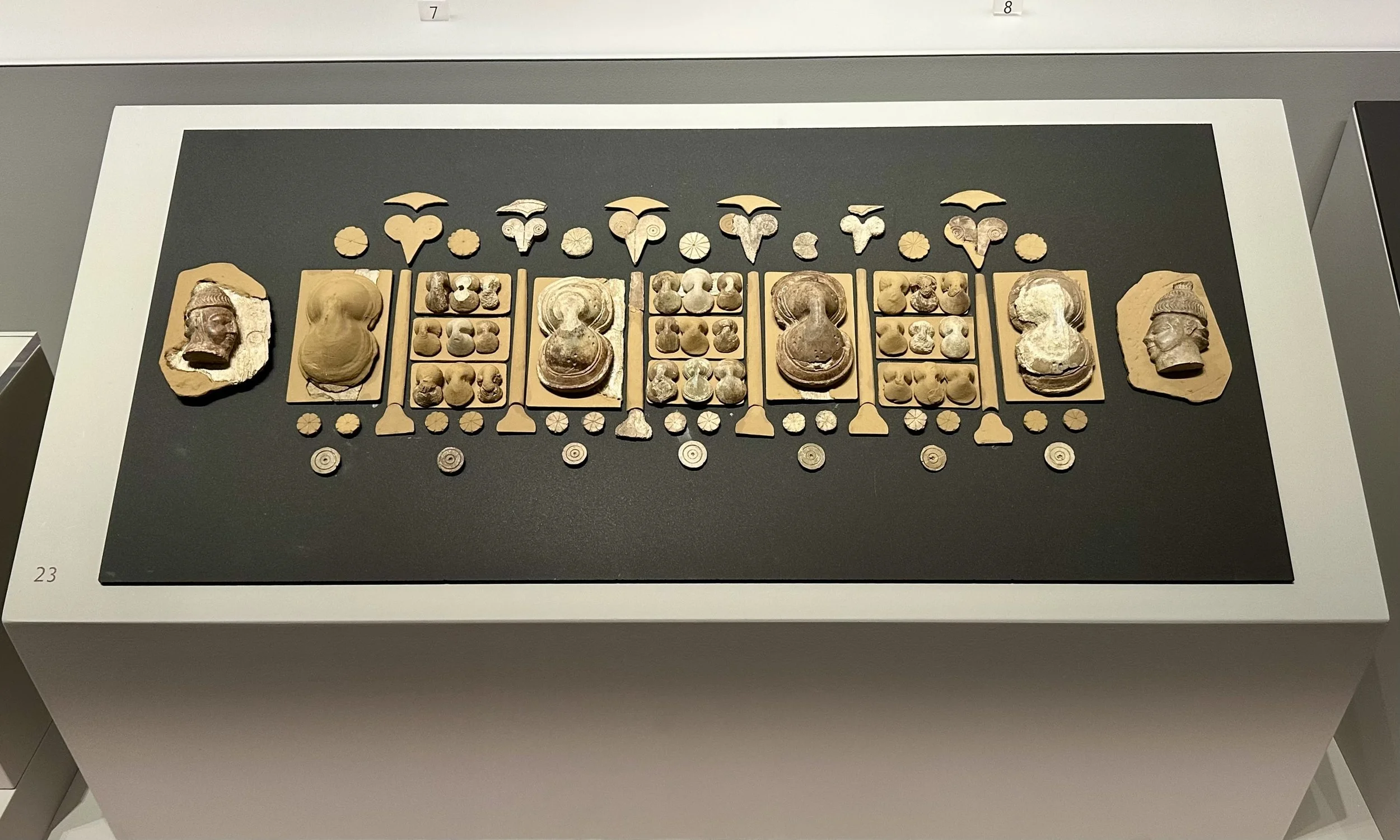
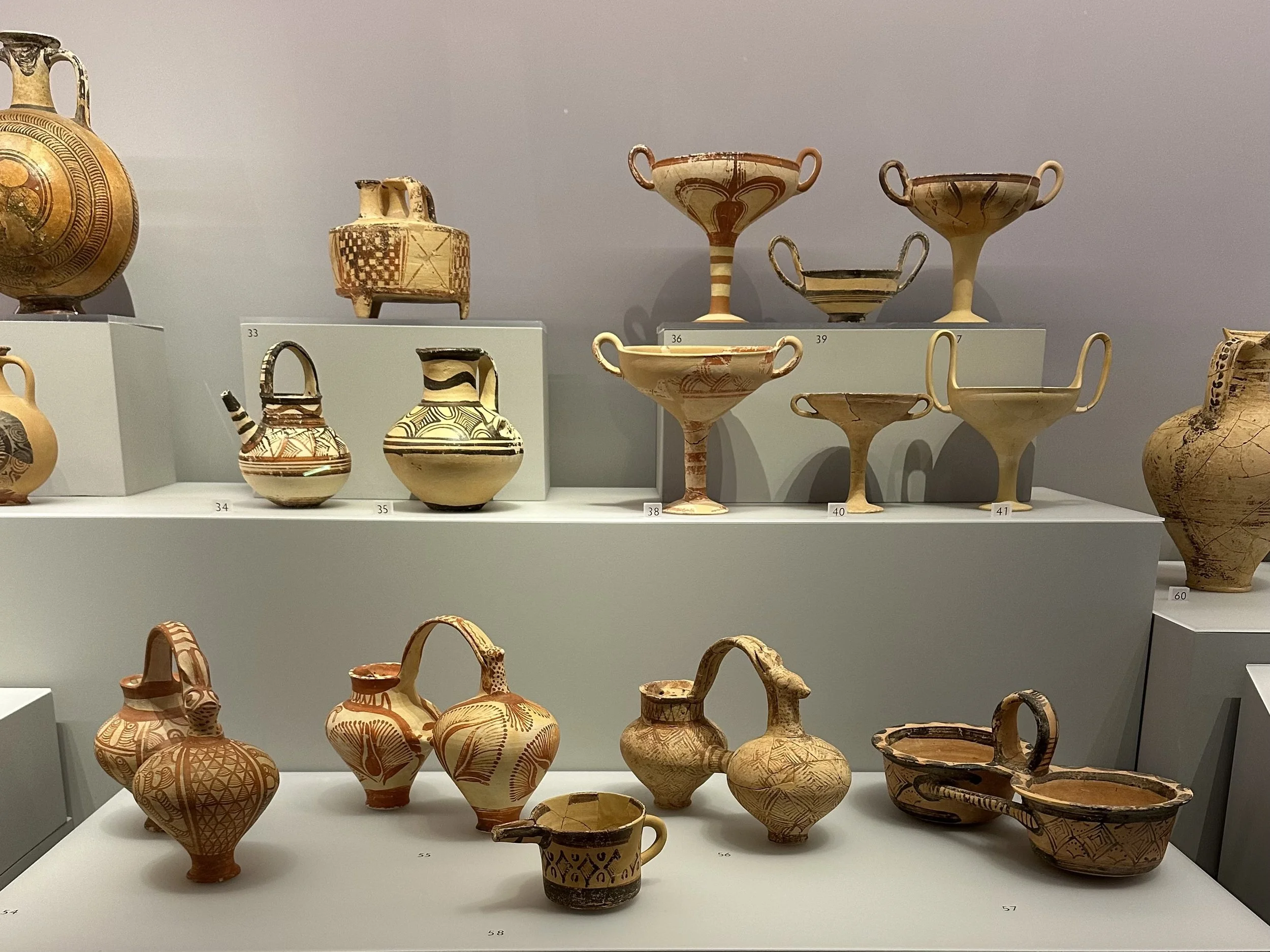

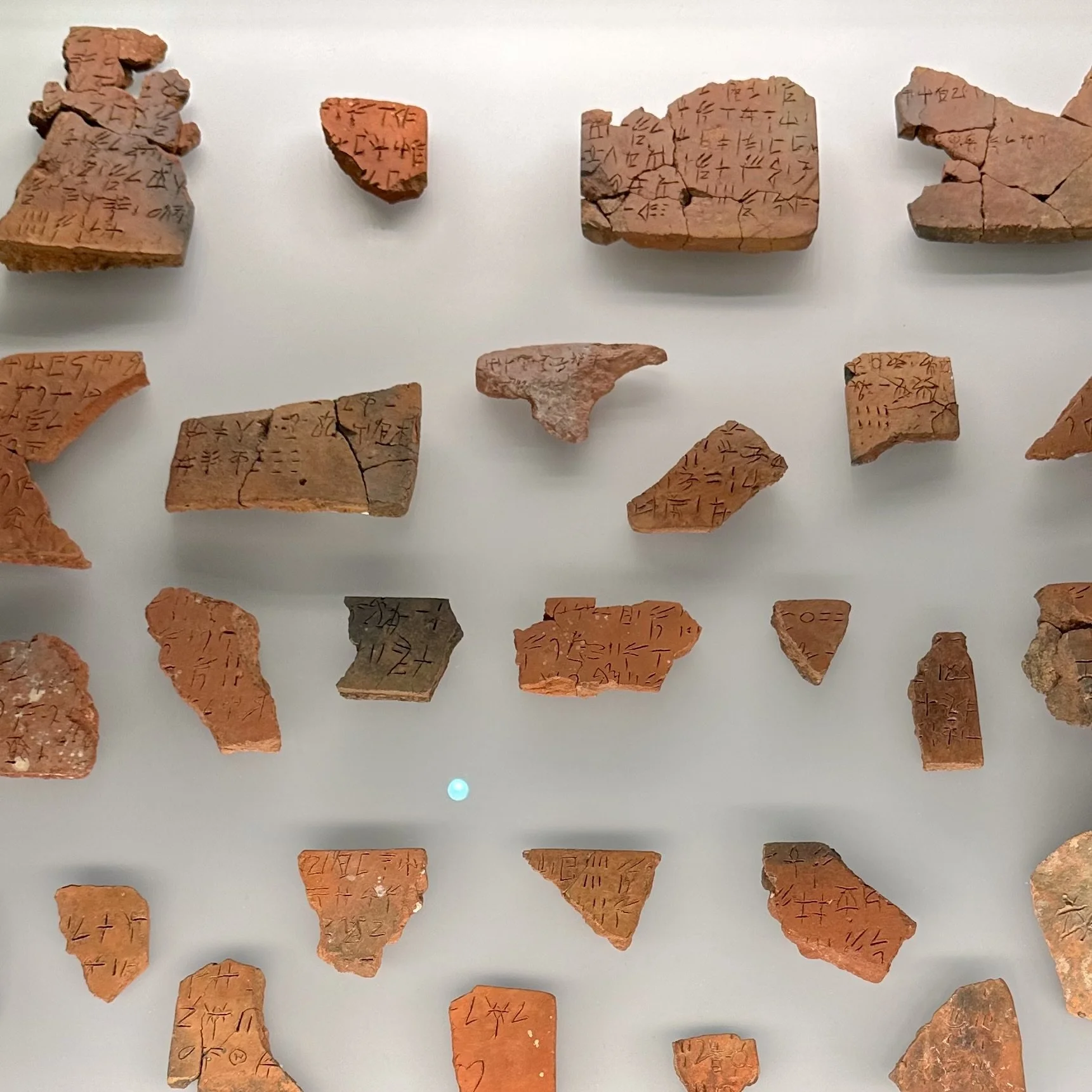
Exhibits from the later Kydonian era showcased two houses. The “House of Dionysus” was named for its intricate mosaic floors. The largest and most well-preserved scene shows Dionysus discovering Ariadne on the island of Naxos. The “Miser’s House” got its name from its inhabitants. During the great Crete Earthquake in 365 CE, they rushed to the basement to retrieve their coin hoards, and were crushed by the collapsing building. I am continually amazed at how archaeologists can reconstruct these events from fragments found at the site. From those clues, we know that this unfortunate family’s last meal was a seafood dish.
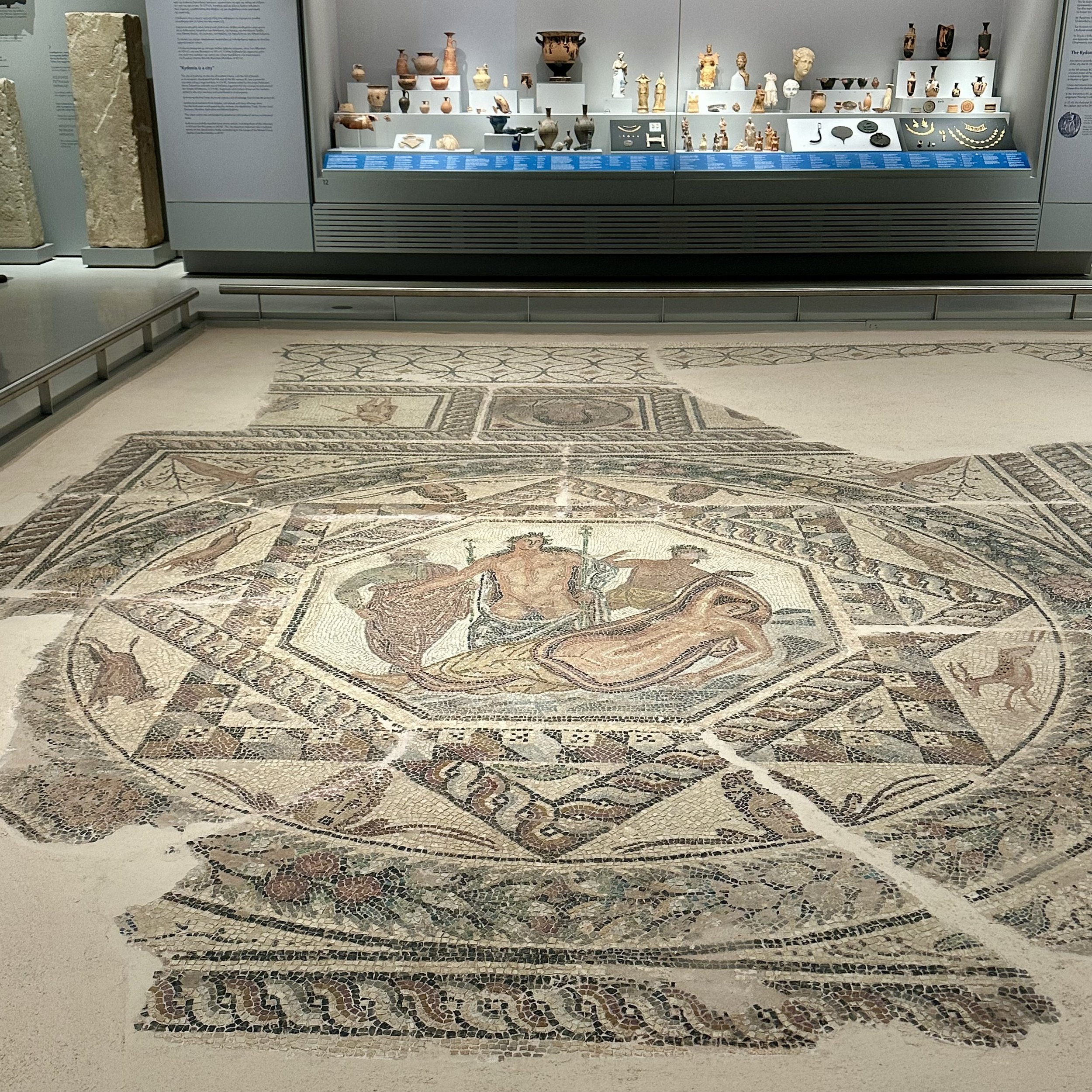

There were some interesting collections in the museum’s collection.
Clay bull figurines were used as offerings at the Sanctuary of Poseidon, which was active in Chania from the 4th century BCE to the 3rd century CE. Over a thousand of these figurines were found.
Silver coins were used throughout Crete in the 6th century BCE. Kydonia was the first Cretan city to mint its own coins. The coins depict gods and other legendary figures, like Zeus, Apollo, Athena, Artemis, Europa, and Medusa.
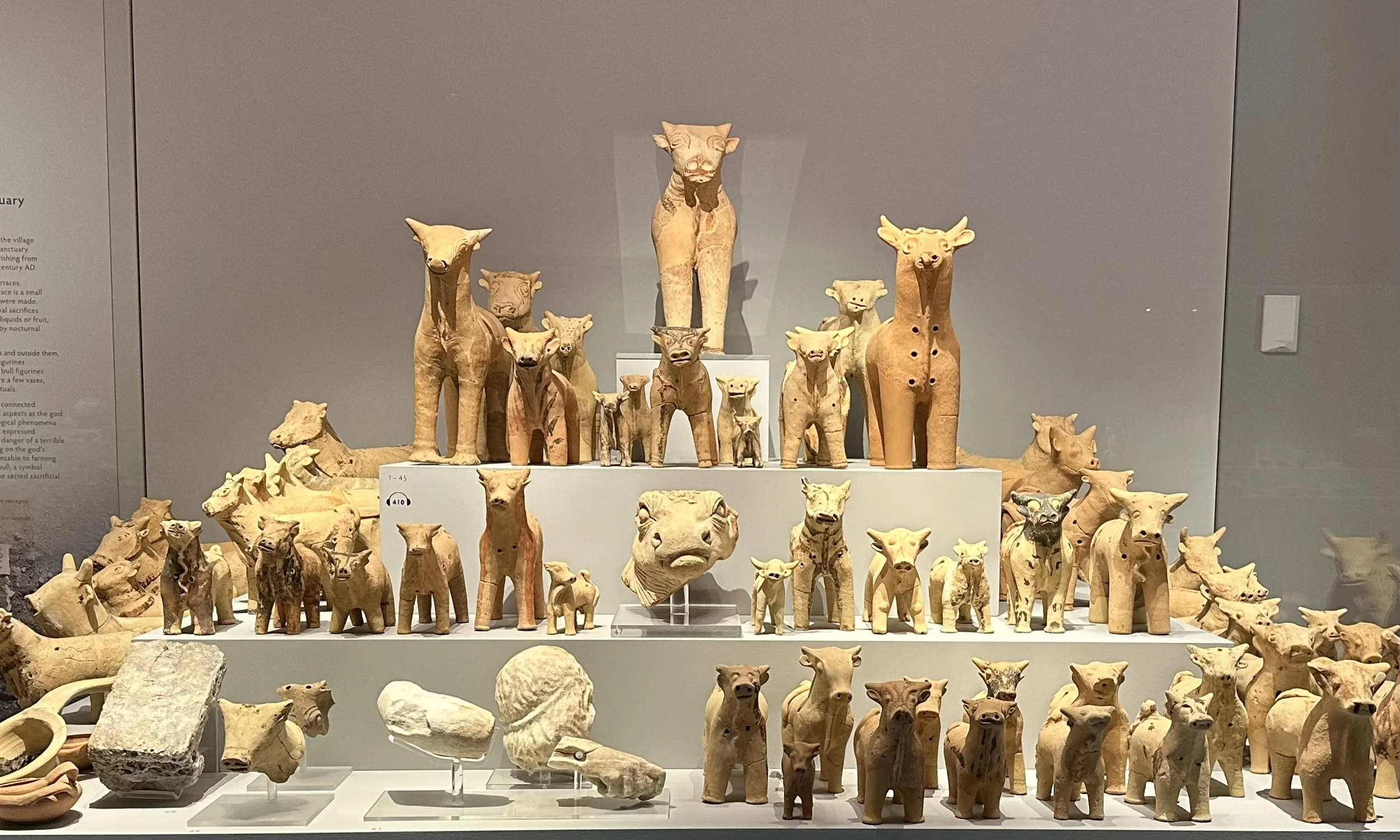
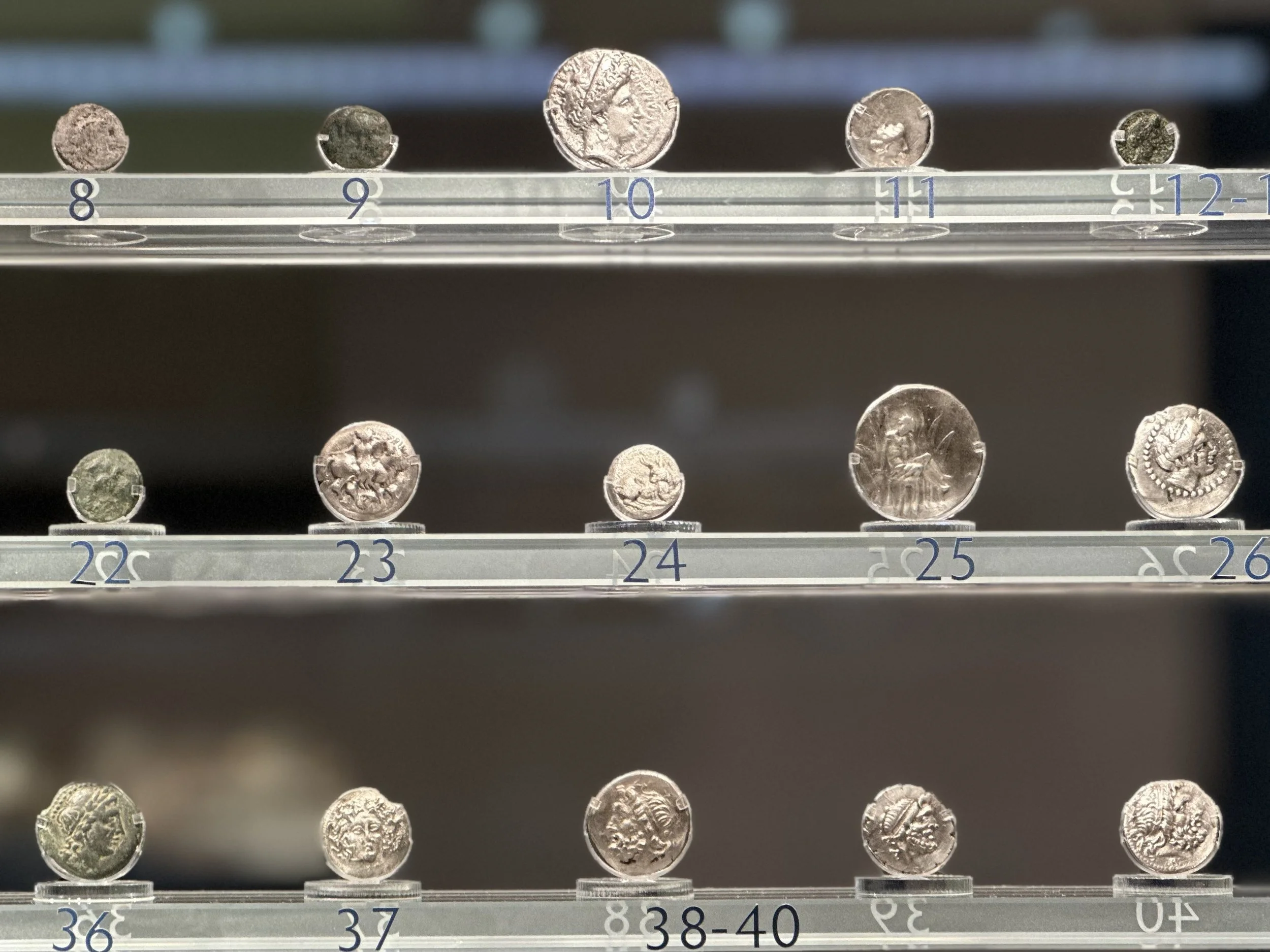
We left the museum and walked back to Old Town Chania, stopping in Splatzia Square for a late lunch at one of our favorite restaurants. After our delicious meal, we were treated to a sunset view of the Ahmet Ağa Minaret. (This and the one at Agios Nikolaos church are the only two minarets to have survived from Chania’s Ottoman era.)
